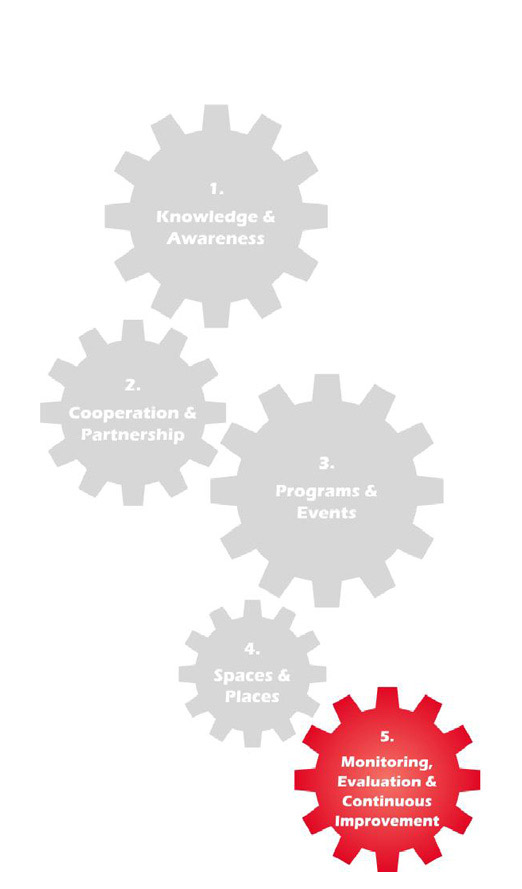Home » About » The 5 Key Success Areas » Monitoring, Evaluation & Continuous Improvement
The 5 Key Success AreasMonitoring, Evaluation & Continuous ImprovementKey Objective: To effectively research, plan, allocate resources, monitor and evaluate the work undertaken to make sure it is efficient and effective and allow for continuous development of physical activity and an active lifestyle for citizens. In order to achieve objectives and therefore the ultimate goal of becoming an Active City or Community with Active Citizens, cities and communities must plan for this to happen. This cross-sectorial Active Development Plan should incorporate short, medium and long term strategies for Triple AC program implementation, monitoring, evaluation and improvement, as well as describe who is responsible to doing what by when. Timeframes for strategies vary depending on location, existing level of development, culture, etc., however typically are:
Not only is it important to plan and implement the communications systems, infrastructure and interventions that encourage activity, it is also important to monitor and evaluate how effective this has been. This helps to increase the perceived value of these implementations as citizens can see the results and remain motivated by them. Monitoring and evaluation also helps to reduce wasted efforts as interventions that have been successful can be separated from those that haven't to allow focus on more productive areas into the future. Evaluation against the plan also allows for better planning in the future. A special part of this development plan is setting aside budget for the implementation of the plan and realisation of plan objectives. Sufficient budget is critical to the success of any program or new initiative. Whilst some objectives, for example increasing communication between sectors, can be achieved with little or no budget, others, for example new facilities or marketing campaigns, will require extensive financial support. It is important that cities and communities have designated public funds to successfully implement and continually improve the Triple AC program, which may be supported by private donations or sponsorships.
|




